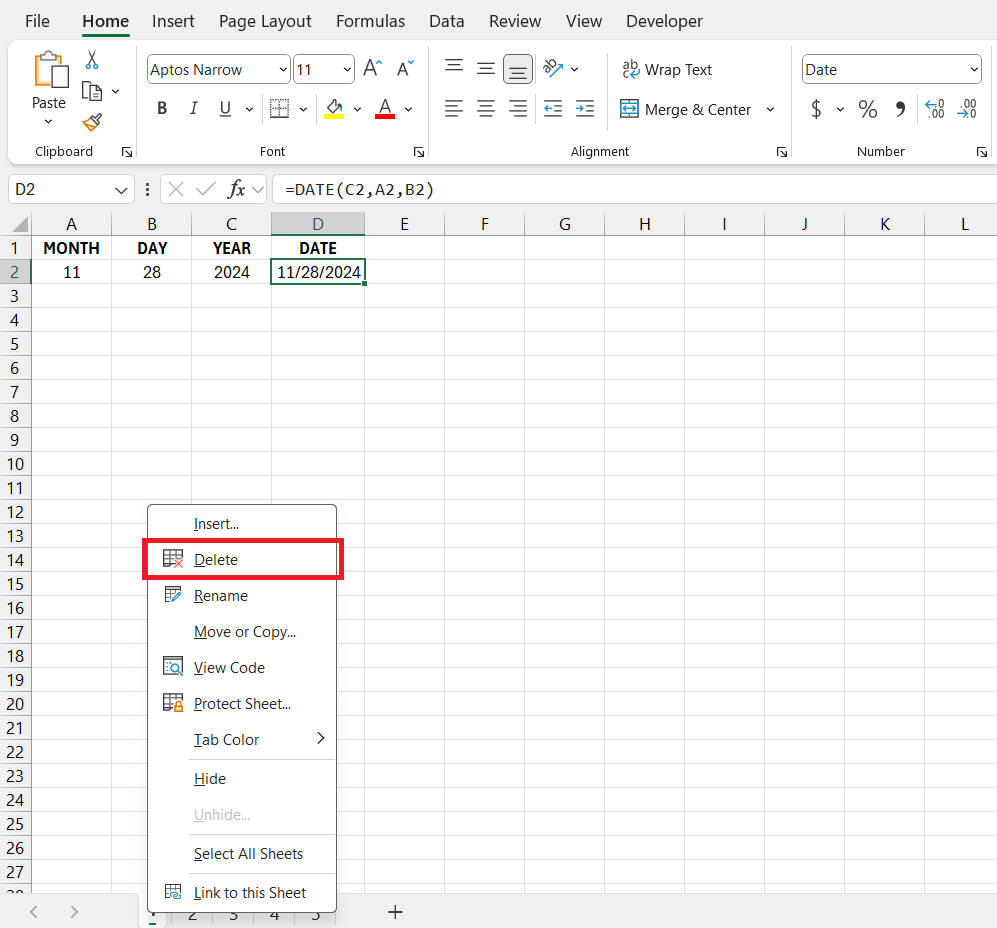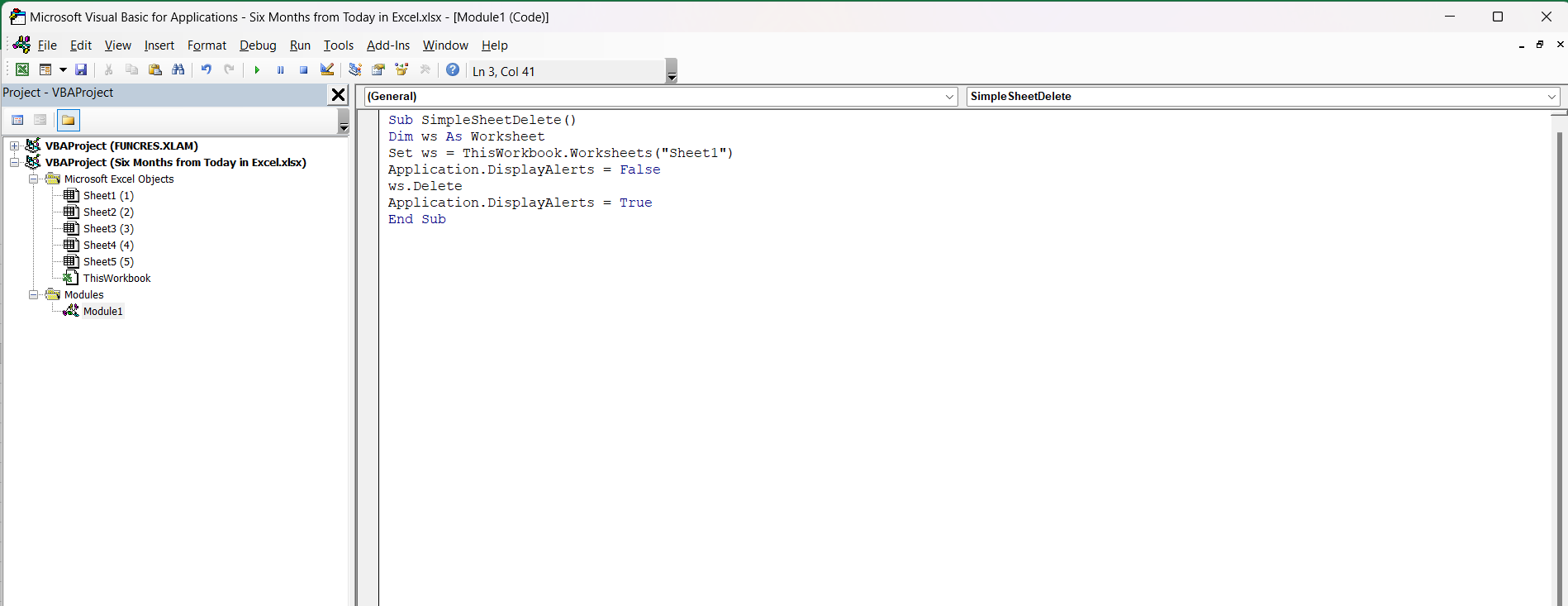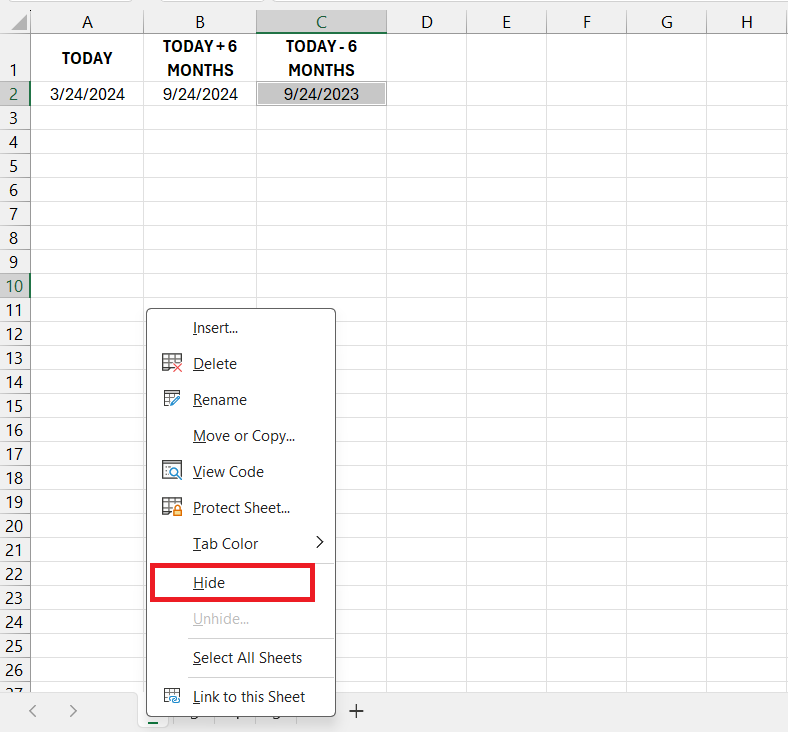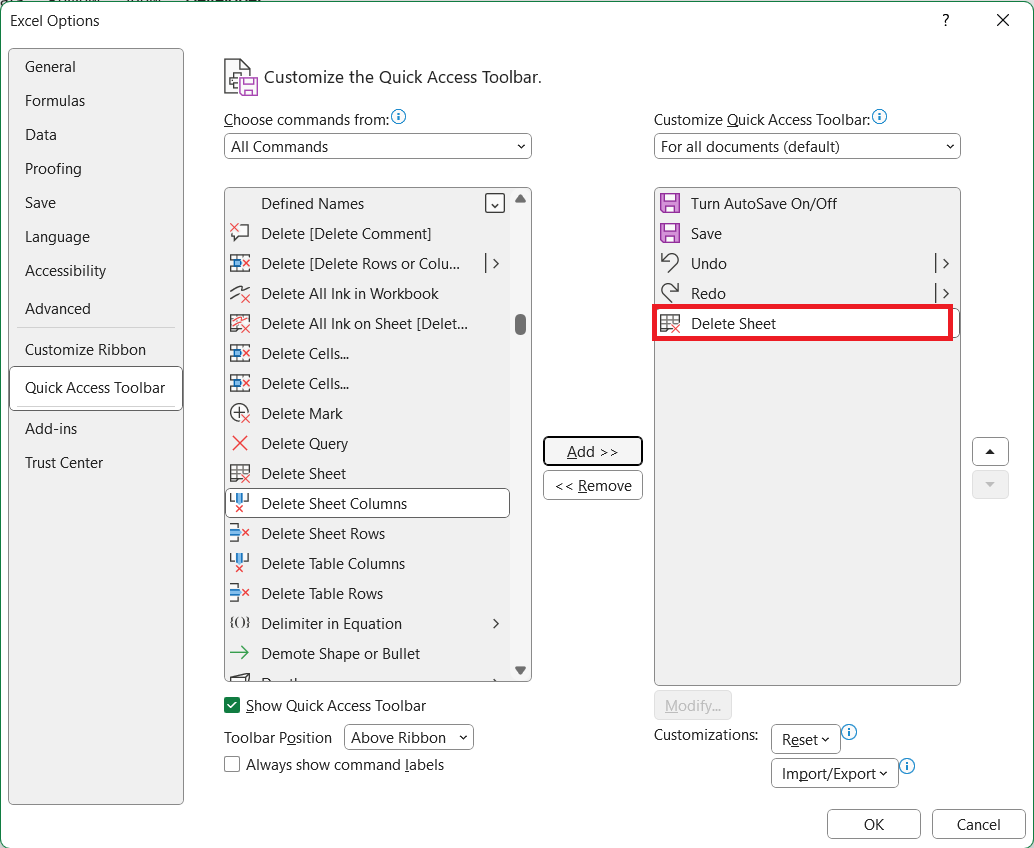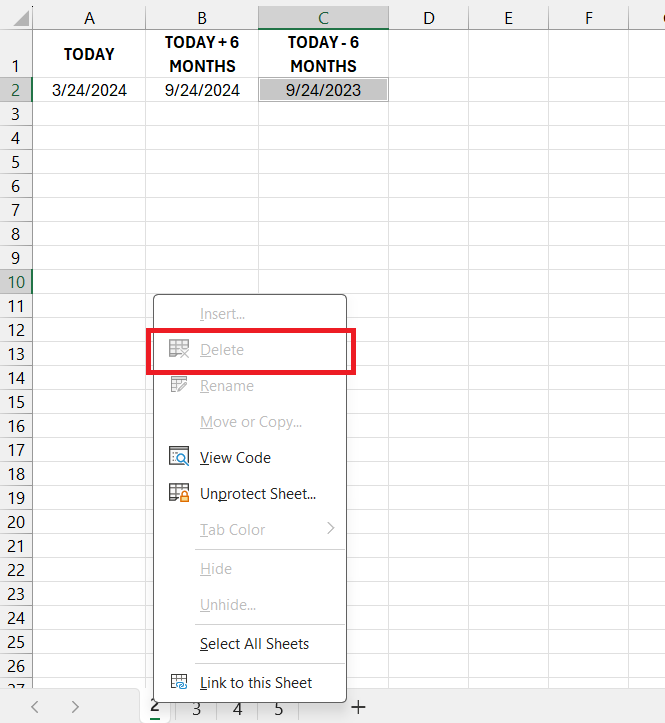Mastering sheet management in Excel is crucial for efficiently navigating through vast amounts of data. To be able to delete sheet in Microsoft Excel is a vital skill, ensuring your workbooks remain tidy, focused, and high-performing.
Key Takeaways
- Simple Deletion Methods: Right-clicking on a sheet tab or using the ‘Delete Sheet’ option under the ‘Home’ tab are the most straightforward ways to remove unwanted sheets.
- Automation with VBA: For more complex scenarios or batch deletions, utilizing VBA scripts can significantly streamline the process.
- Consider Hiding vs. Deleting: Before removing a sheet permanently, assess whether hiding it might be a better option for reducing clutter without losing data.
- Backups Are Essential: Always create backups of your workbook before deleting sheets to prevent irreversible data loss.
- Efficiency Tools and Shortcuts: Leveraging Excel’s shortcut keys and customizing the Quick Access Toolbar can make sheet management faster and more efficient.
Table of Contents
Introduction to Mastering Excel Worksheets
The Need for Sheet Management in Excel
Managing a plethora of data within Excel means that one might often grapple with more sheets than necessary. The essence of sheet management in Excel is paramount; it ensures ease of navigation, improved performance, and the focus on data that truly matters for your analysis.
Overview of Deleting Sheets in Excel
Deleting sheets in Excel is a straightforward task, yet it’s one that holds significant weight in the maintenance of a tidy and functional workbook. Whether to eliminate redundancy, protect sensitive data, or simply to cleanse your workspace, knowing how to efficiently discard unnecessary sheets will streamline your data management experience.
Different Techniques for Deleting Sheets
Right-Click and Context Menu Options
Navigating Excel’s labyrinth of options can often be daunting. However, when it comes to deleting sheets, simplicity reigns supreme through the use of the context menu. Simply right-click on the sheet tab you wish to remove and select the delete option.
This intimates Excel to remove the sheet from your workbook, provided you confirm the prompt that you indeed wish to proceed with the deletion.
Home Tab and Ribbon Commands
Excel organizes its plethora of features into tabs and the Ribbon serves as the command center. For deleting sheets, they make it a breeze. Navigate to the ‘Home’ tab, and under the ‘Cells’ group, tap into the ‘Delete’ dropdown. From here, it takes only a click on ‘Delete Sheet’ to bid farewell to the unnecessary sheet cluttering your workspace.
Automate with VBA: A Guide to Deletion Scripts
Simple VBA Code to Delete Sheet
Harnessing the power of VBA can elevate your Excel efficiency, especially with tasks such as deleting sheets. A simple VBA snippet can do the trick with minimal input from you. Here’s a basic script you can use:
Replace “Sheet1” with the actual name of the worksheet you want to discard. This code swiftly removes the specified sheet while temporarily disabling alerts to avoid any interruptions.
Advanced VBA Scripts for Batch Sheet Deletions
For those of you tackling larger files laden with numerous sheets, an advanced VBA script is your ally. By utilizing a more complex code, Excel can effortlessly purge multiple sheets in a single run:
In this script, simply replace “Sheet1”, “Sheet2”, and “Sheet3” with the names of the sheets you wish to delete. Run the script, and those sheets will vanish, optimizing your workbook with velocity and precision.
Safety First: Avoiding Data Loss When Deleting Sheets
Understanding the Implications of Deleting vs. Hiding Sheets
Before you proceed to delete sheet, it’s crucial to understand the nuances between deletion and hiding. Deleting removes the sheet and all its data permanently, lightening your workbook but also rendering that data irretrievable without a backup. Hiding a sheet, on the other hand, simply conceals it from view while keeping it intact within the workbook. It’s perfect for reducing visual clutter while preserving the data for potential future use.
Remember, hiding won’t shrink your file size, but it can aid in focusing on the sheets that matter most to your current tasks.
Backup Strategies Before Making Major Changes
It’s vital to safeguard your data before you begin wielding the deletion tool. Establishing a series of backup strategies ensures that you can restore your workbook should the unexpected occur:
- Manual Duplication: Save two versions of the file manually each time you work on it, creating an immediate backup.
- External Backups: Stash a copy of your workbook on an external drive or cloud storage to defend against local system failures.
- Export Data: Export important sheets to different file formats for additional redundancy.
- Internal Copying: Duplicate sheets within the workbook itself to quickly revert changes if needed.
- Regular Backups: Make data backup a routine practice, not just a pre-deletion measure, to bulletproof your workflow against potential mishaps.
Regular backups won’t just be your safety net—they’ll be the trampoline that bounces you back into business-as-usual after an unexpected deletion.
Keyboard Shortcuts and Quick Access Tools
Utilizing Shortcut Keys for Efficiency
Excel’s arsenal of shortcut keys is a game-changer for boosting efficiency. When it comes to sheet management, knowing the right combination can save you loads of time. For example:
- “Ctrl” + “Page Down” swiftly selects the next sheet.
- “Ctrl” + “Page Up” jumps back to the previous sheet.
Master these keystrokes, and you’ll navigate through the sheets of your workbook with the agility of a professional pianist through octaves.
Customize the Quick Access Toolbar for Speedier Sheet Management
The Quick Access Toolbar in Excel is your customizable command hub. Tailor it to your workflow needs and include options like ‘Delete Sheet’ for one-click operations, enhancing your productivity. Tweaking this toolbar streamlines your processes, placing the most frequently repeated actions right at the top of your workspace where they’re always within reach.
Simply click the dropdown arrow at the end of the Quick Access Toolbar, choose ‘More Commands’, and add ‘Delete’ to the list.
Now, with this setup, managing sheets will be swifter than ever.
Problem-solving Common Deletion Errors
When “Delete” Is Not an Option: Grayed-out Troubles
Sometimes, you might encounter a vexing scenario where the “Delete” option is grayed out. This usually indicates that your workbook is protected.
To conquer this roadblock:
- Unprotect the Workbook: Again in the ‘Review’ tab, opt for ‘Unprotect Workbook‘, and similarly, provide the password to proceed.
Once protection is lifted, you’ll find that the ability to delete sheet is restored, clearing the path for you to streamline your workbook content.
Script Errors and Debugging Tips
When you dabble with VBA scripts, errors are part and parcel of the journey towards automation mastery. If you stumble upon script errors while attempting deletions, utilize these tips to debug:
- Error Messages: Pay close attention to the error pop-ups; they often contain clues on what went wrong.
- Breakpoints: Set breakpoints in your VBA code to pause execution and inspect the current state of variables.
- Immediate Window: Use the Immediate Window in the VBA editor to test snippets of code or inspect variable values.
- Check References: Ensure that you have the correct sheet names and that they exist in the workbook.
- Step-Through Execution: Go through your code line by line using the F8 key to pinpoint where the script falters.
Keep a keen eye on these script signposts, and with patience, you’ll navigate your way to a bug-free VBA solution.
FAQs: Your Sheet Deletion Queries Answered
How do I quickly Delete sheet in Excel?
To quickly delete sheet in Excel, right-click on the sheet tab at the bottom of your workbook and select “Delete” from the context menu. Confirm the action if prompted, and the sheet is instantly removed.
Why can’t I Delete sheet in Excel?
If you can’t delete sheet in Excel, it may be protected, part of a group of sheets, or the workbook may be shared or protected. Unprotect the sheet or workbook, ungroup sheets, or check sharing status to resolve the issue.
What is the shortcut key to delete one sheet in Excel?
The keyboard shortcut to delete a single sheet in Excel is Alt + H + D + S. Press these keys in sequence, not simultaneously, to delete the active sheet after confirming the prompt.
How do I delete multiple worksheets at once without VBA?
To delete multiple worksheets in Excel without VBA, first select them by holding the Ctrl key and clicking on each sheet tab you wish to delete. Then, right-click one of the selected tabs and choose ‘Delete’. Confirm your action to remove the selected sheets.
What should I do if I accidentally delete an important sheet?
If you accidentally delete an important sheet, quickly press “Ctrl + Z” to undo the action. If that doesn’t work, check for a previous version under “File” > “Info” > “Version History” or use “Recover Unsaved Workbooks” if the sheet wasn’t saved.
John Michaloudis is a former accountant and finance analyst at General Electric, a Microsoft MVP since 2020, an Amazon #1 bestselling author of 4 Microsoft Excel books and teacher of Microsoft Excel & Office over at his flagship MyExcelOnline Academy Online Course.

